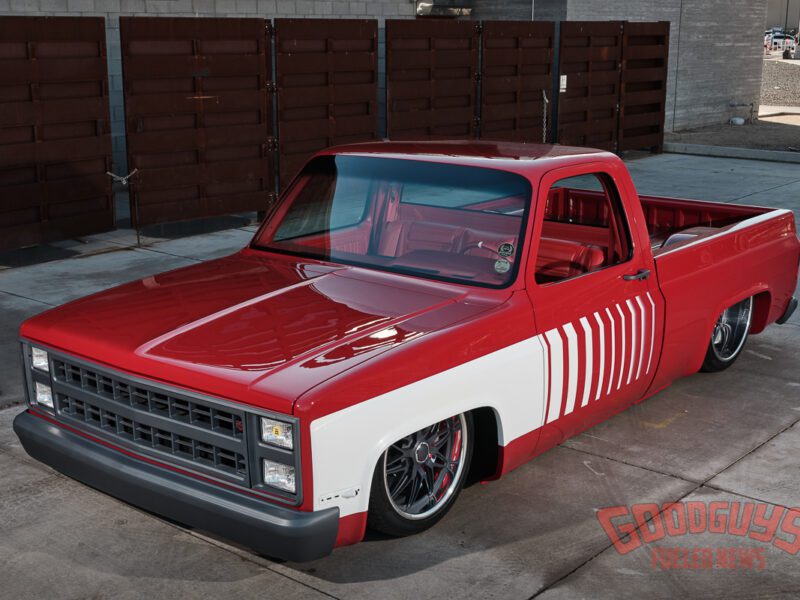Good Bones: Randy Perez’s 1936 Packard 120 Convertible Coupe
That’s right, folks—we’re back with Randy Perez for yet another round of classic car anecdotes from his collection of custom vehicles. This time, we’re spotlighting his gorgeous, purist-repelling 1936 Packard 120 Convertible Coupe. If you have been following our chapters from Randy’s private collection, the character and unique qualities of this car should come as no surprise to you. Before we dig into this specific car, we chatted with Randy briefly about the history behind the Packard name, what it meant back then, and what it means now.
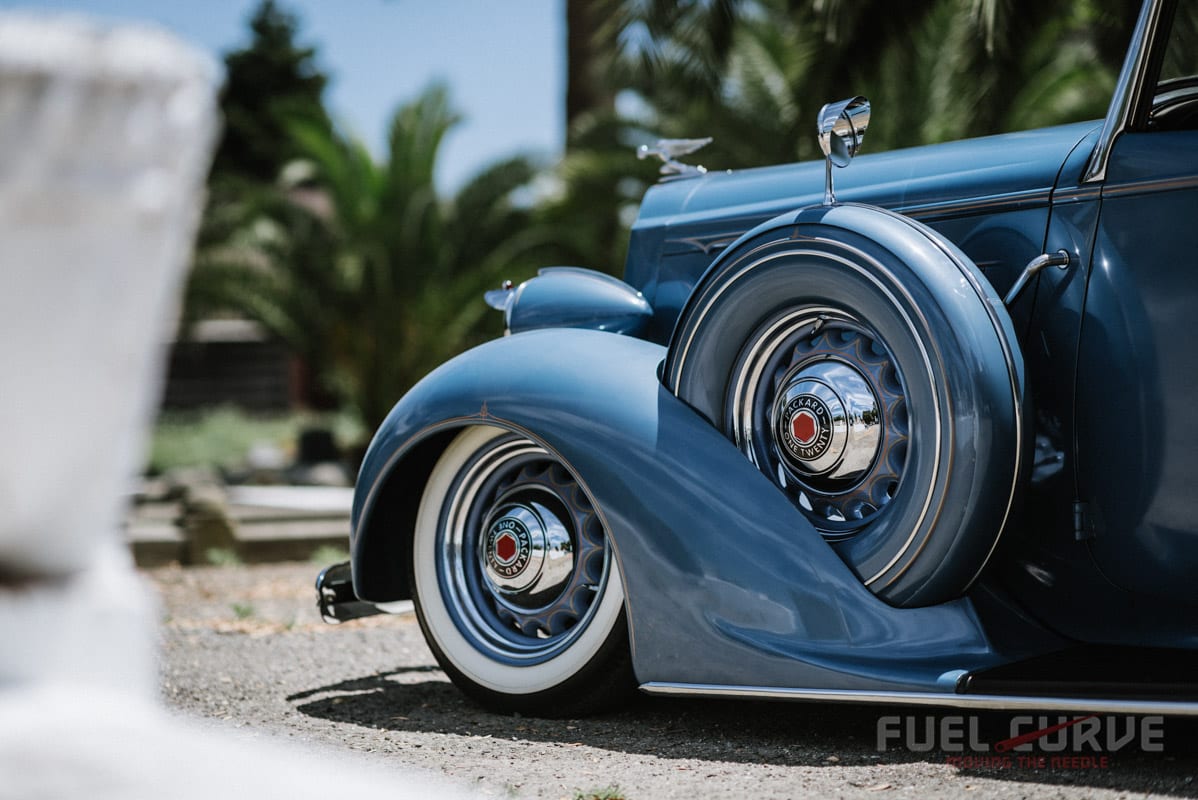
“Ask the Man Who Owns One” was the catchy slogan that the manufacturer adopted over 100 years ago. While it sounds a bit mysterious and definitely exclusive, it rang true—especially in its heyday.

“In the height of the Depression,” Randy stated, “you were someone if you could afford this car!” He went on to talk about the more common Packard customers: doctors, successful attorneys, ball players, and celebrities. Considered to be the Rolls Royce of America, Packard had procured for itself a wildly respected presence in the world of luxury automobiles. To own a Packard, Randy pointed out: “You were not just rich. You were wealthy.”
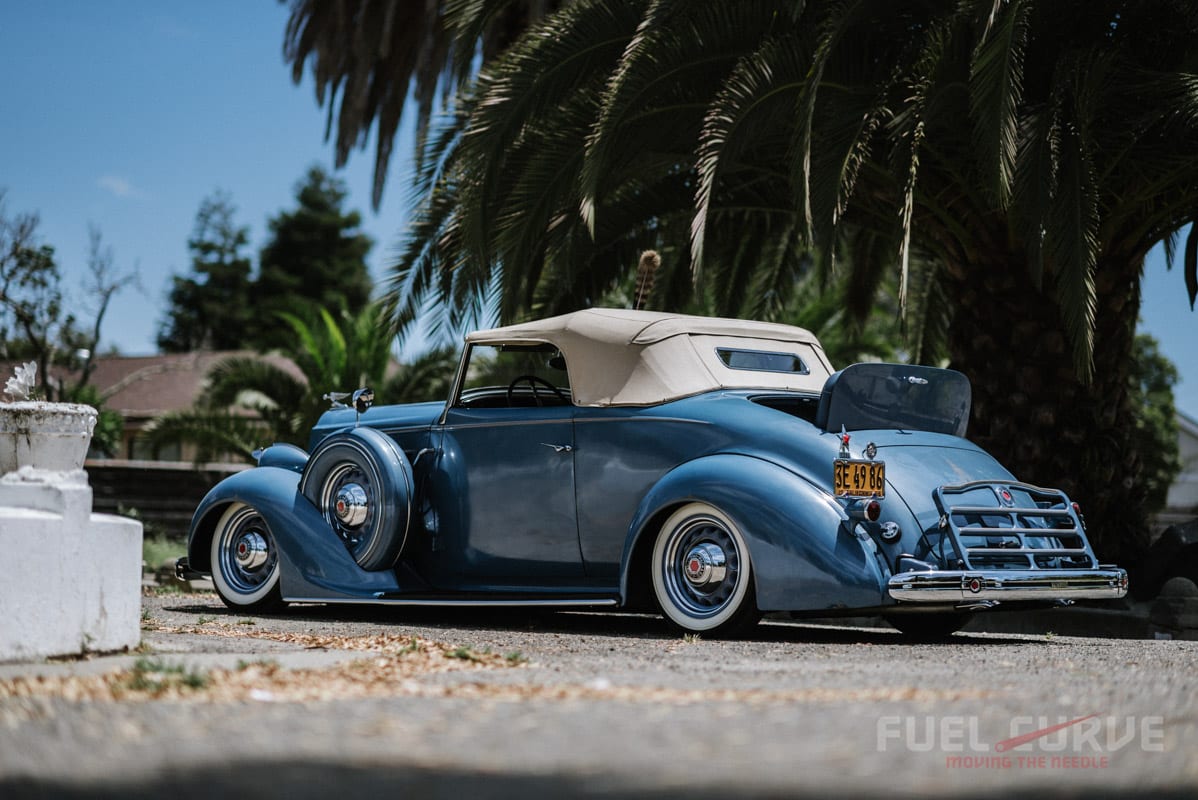
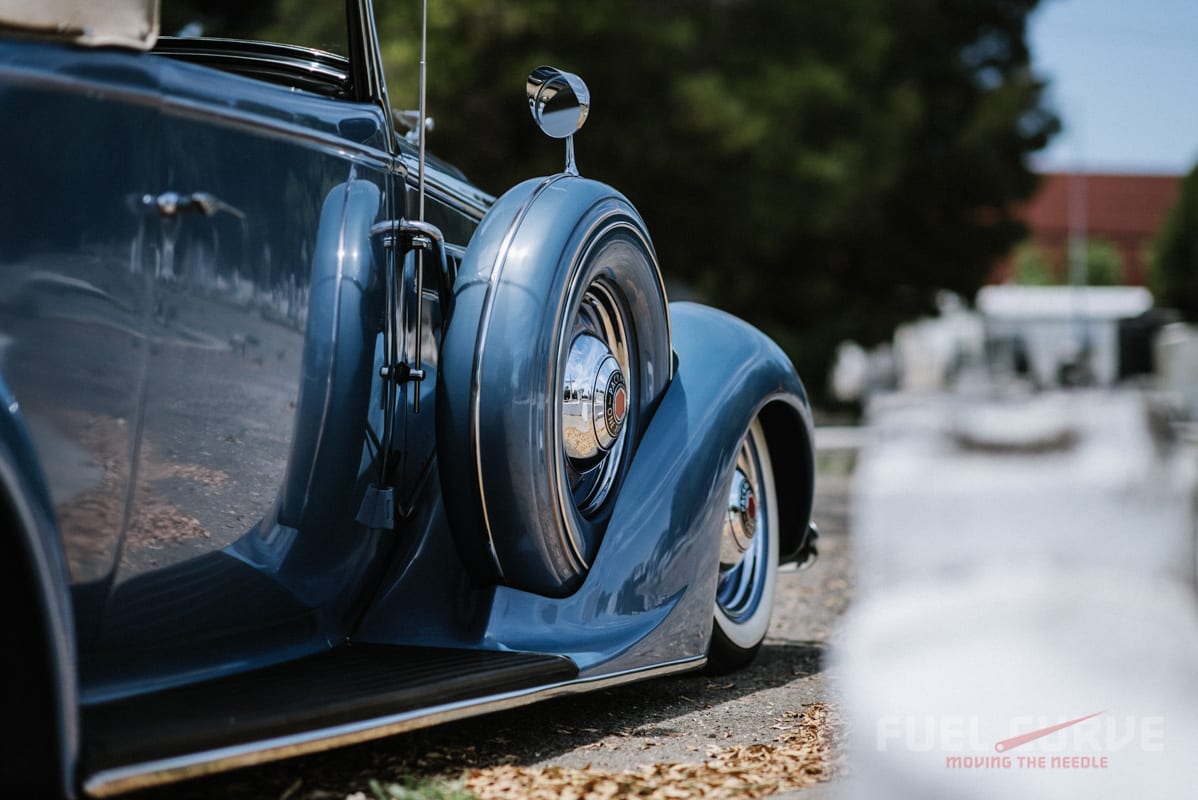
Back in August of 2005, Randy bought a perfectly stock, overly restored Packard from a collector in South Carolina. “It was common in the ‘80s to over restore cars,” Randy explained during our shoot. “People were going for points in the concours circles. But because of that high level of restoration, the quality and craftsmanship have aged well.” The restoration of this car in particular was done properly, using the correct paint and materials to help the oldie from the ‘30s live on. In addition, this Packard was fully optioned with features like dual side mount spare tires, a trunk rack, radio, banjo steering wheel, clock, and rumble seat.

From 2005 to now, things have certainly changed. Randy is a hot rod and low rider enthusiast to the core, so naturally he had to give the 120 a little bit of a spin from his favorite genres of car culture. He installed the front hydraulic suspension to help eliminate some of that colossal, stock wheel gap, and it has completely changed the dynamic of the car. It now has the ability to lay quite low, which is something we never would expect to see in a Packard.


In addition to the suspension modification, Randy also opted for a full set (including spares) of Packard artillery wheels, sporting fresh 500-16 B.F. Goodrich tires from Coker Tire. Randy explained that these wheels are so hard to find that he actually bought another Packard, took its wheels off, and sold it on a different set. The remaining two wheels popped up at different swap meets. The crisp, white walls combined with those wheels complement the color and profile of the Packard so beautifully that we’d say it was worth all the trouble.

What would a Packard be without its rare accessories? Randy has tediously collected a breadth of pieces to complete the car, some of which include the Appleton fog lights, Packard passing lamp, front bumper guards, license plate toppers, bakelite suicide knob and shift knob, headlight visors complete with high beam indicators, and a foot rest for the passengers in the rumble seat. (Bonus: it’s got a wolf whistle, too.)
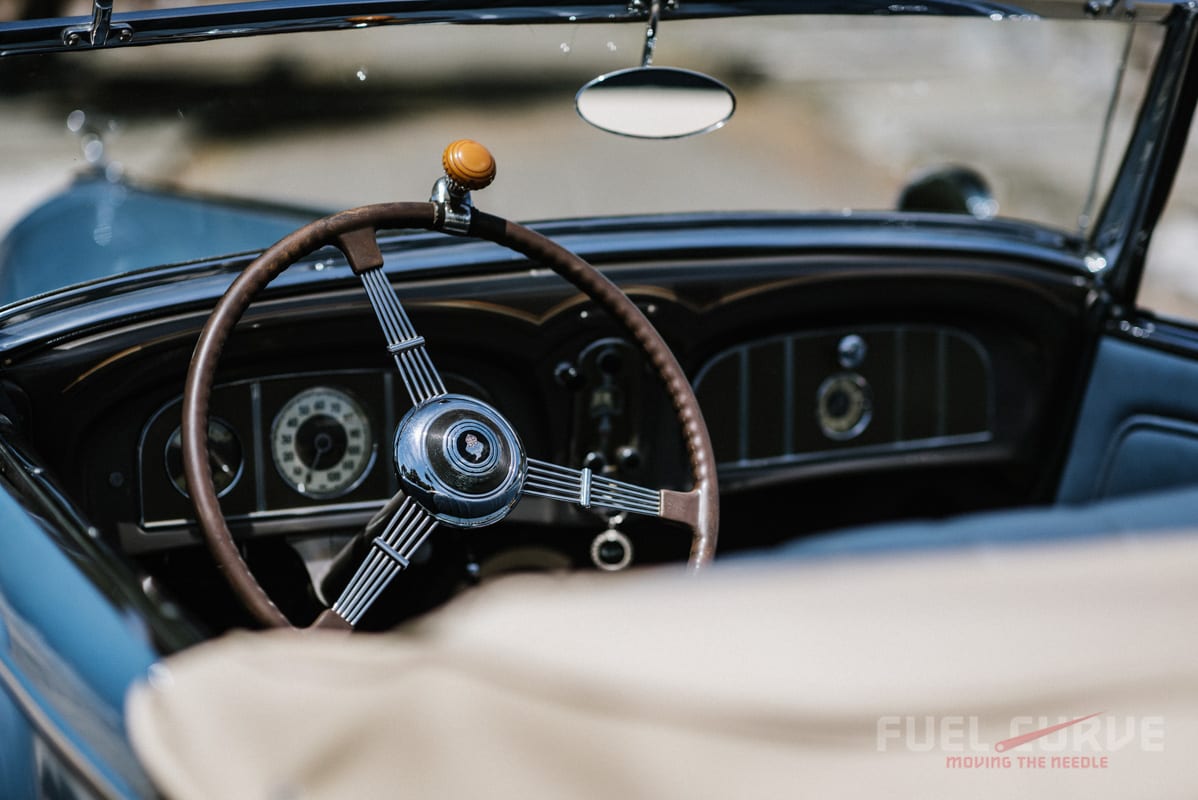
All of these individual bits and pieces comprise a wonderfully big picture, and for Randy, that’s half of the fun. The search and the success of acquiring those rare, sometimes obscure parts and accessories is very rewarding, and makes the car all the more special. Add in his other custom touches—suspension, signature raccoon tail, and wheel/tire combo—and he’s left with a car that is truly him.



In 13 years of ownership, Randy has only grown to love his 120 more. This is the kind of love that we just can’t get enough of. A true appreciation for what you have built is what we’re all after, and we should take note of it from builders like Randy. He likens the driving experience and quality of his Packard to driving a luxury vehicle from the 1970s—“It’s smooth, powerful, quiet, effortless, and easy to drive. After more than a decade of driving it, I can see why Packard was so confident. Ask me, I’ll tell you. It’s a great car!”















